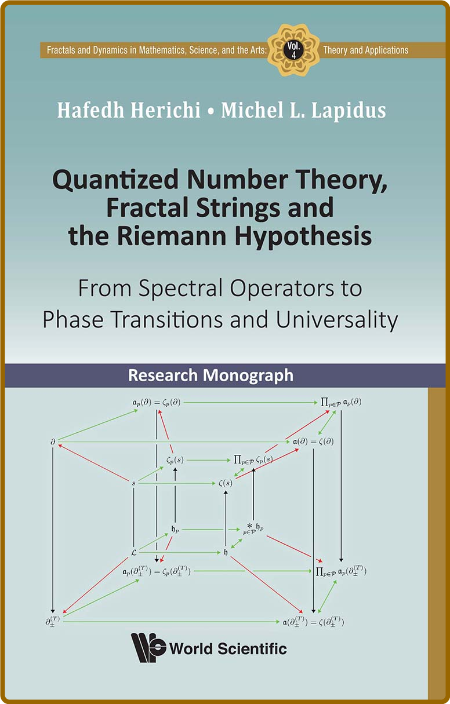0DAYDDL
Active member

pdf, epub | 14.84 MB | English | Isbn: B09C2BYCY1 | Author: Hafedh Herichi;Michel L Lapidus; | Year: 2021
Description:
Studying the relationship between the geometry, arithmetic and spectra of fractals has been a subject of significant interest in contemporary mathematics. This book contributes to the literature on the subject in several different and new ways. In particular, the authors provide a rigorous and detailed study of the spectral operator, a map that sends the geometry of fractal strings onto their spectrum. To that effect, they use and develop methods from fractal geometry, functional analysis, complex analysis, operator theory, partial differential equations, analytic number theory and mathematical physics.Originally, M L Lapidus and M van Frankenhuijsen 'heuristically' introduced the spectral operator in their development of the theory of fractal strings and their complex dimensions, specifically in their reinterpretation of the earlier work of M L Lapidus and H Maier on inverse spectral problems for fractal strings and the Riemann hypothesis.One of the main themes of the book is to provide a rigorous framework within which the corresponding question 'Can one hear the shape of a fractal string?' or, equivalently, 'Can one obtain information about the geometry of a fractal string, given its spectrum?' can be further reformulated in terms of the invertibility or the quasi-invertibility of the spectral operator.The infinitesimal shift of the real line is first precisely defined as a differentiation operator on a family of suitably weighted Hilbert spaces of functions on the real line and indexed by a dimensional parameter c. Then, the spectral operator is defined via the functional calculus as a function of the infinitesimal shift. In this manner, it is viewed as a natural 'quantum' analog of the Riemann zeta function. More precisely, within this framework, the spectral operator is defined as the composite map of the Riemann zeta function with the infinitesimal shift, viewed as an unbounded normal operator acting on the above Hilbert space.It is shown that the quasi-invertibility of the spectral operator is intimately connected to the existence of critical zeros of the Riemann zeta function, leading to a new spectral and operator-theoretic reformulation of the Riemann hypothesis. Accordingly, the spectral operator is quasi-invertible for all values of the dimensional parameter c in the critical interval (0,1) (other than in the midfractal case when c =1/2) if and only if the Riemann hypothesis (RH) is true. A related, but seemingly quite different, reformulation of RH, due to the second author and referred to as an 'asymmetric criterion for RH', is also discussed in some detail: namely, the spectral operator is invertible for all values of c in the left-critical interval (0,1/2) if and only if RH is true.These spectral reformulations of RH also led to the discovery of several 'mathematical phase transitions' in this context, for the shape of the spectrum, the invertibility, the boundedness or the unboundedness of the spectral operator, and occurring either in the midfractal case or in the most fractal case when the underlying fractal dimension is equal to ½ or 1, respectively. In particular, the midfractal dimension c=1/2 is playing the role of a critical parameter in quantum statistical physics and the theory of phase transitions and critical phenomena.Furthermore, the authors provide a 'quantum analog' of Voronin's classical theorem about the universality of the Riemann zeta function. Moreover, they obtain and study quantized counterparts of the Dirichlet series and of the Euler product for the Riemann zeta function, which are shown to converge (in a suitable sense) even inside the critical strip.For pedagogical reasons, most of the book is devoted to the study of the quantized Riemann zeta function. However, the results obtained in this monograph are expected to lead to a quantization of most classic arithmetic zeta functions, hence, further 'naturally quantizing' various aspects of analytic number theory
Category:Number Theory, Fractal Mathematics, Number Theory
RapidGator
Code:
https://rapidgator.net/file/72f5e9553c604b9fd0b0583466821a52/
Code:
https://ddownload.com/yelwmmrty3qz